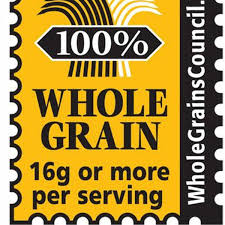Cereal can be a great breakfast option. It’s quick, easy, and there are lots of healthy options to choose from. Many cereals have lots of added nutrients that children need to grow up healthy, especially when they’re paired with milk. Make sure to drink the extra milk though, since that’s where a lot of the nutrients from the cereal end up!
There are many healthy cereals but there are also many unhealthy options too. Check out these tips to make sure you are choosing the best cereal for your family.
Cereals marketed to children–the kind with colorful packaging, cartoon characters, and miniature versions of sweets like cookies and marshmallows–usually aren’t a healthy choice. These are often full of sugar and sodium and have less of the important nutrients like fiber and protein. So don’t get distracted by pretty packaging! Instead, take a look at the nutrition facts label:
- Look at the serving size. Some brands list small serving sizes to make their cereals seem healthier. If you know you’ll eat more than the recommended serving, make sure to adjust the information on the nutrition label to the portion you normally eat.

- Choose whole grains. If the box doesn’t say “100% whole grain,” or have this label, look at the first ingredient on the nutrition label’s ingredient list. If it says the words “whole” or “bran,” you’re on the right track!
- Fiber is also important in a healthy cereal, and goes hand-in-hand with whole grains. This nutrient helps with healthy digestion, and it helps us feel full for longer. Try to find cereals with at least 2 grams of fiber per serving.
Things to watch out for: added sugars, sodium, and saturated fats
- Choose cereals with less than 12 grams of sugar per serving. You can also skim the ingredients list–if sugar is one of the first two ingredients, it probably isn’t the healthiest choice. Watch out for other sugars like cane syrup, agave, and honey.
- Look for cereals with less than 40 mg of sodium per serving. Sodium is added to many packaged foods.
- Most cereals don’t have a ton of saturated fat, but some do, especially granolas with chocolate pieces or coconut. Look for cereals with less than 3 grams of saturated fat per serving.
Finally, if your kids are used to very sweet cereal, try adding fresh fruit, nuts or even cinnamon for a bit of extra flavor! You could also start by mixing healthy cereals with some of your kids’ favorites.
Happy cereal shopping!
Sources: CSPinet and Healthy Children